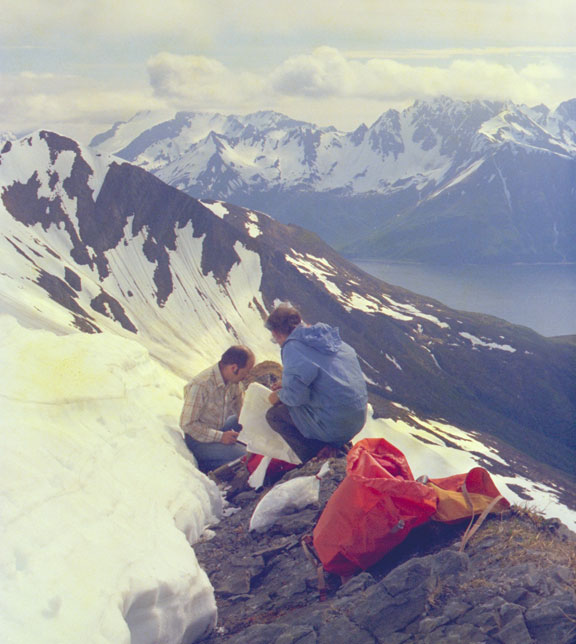Geology
| Introduction | Alaska | Russia | Paleogeography | Energy Resources |
|---|
IntroductionThe geology of Alaska and Northeastern Russia, and in fact the whole of the circum-Arctic region, is complex. Large parts of Alaska and northeastern Russia are made up of several tectomic plates or 'terranes' that have separate histories but that have collided and coalesced with one another. Significant plate movements have bent and buckled the rocks into the numerous mountain ranges that make up the area. This is particularly so for the Wrangell Mountains in southeastern Alaska, as well as the Alaska and Brooks Ranges. The scale of the movements becomes starkly obvious when you realise that entire mountains in the Brooks Range are made up of rocks that are upside down. In northeastern Russia, throughout the Late Cretaceous, innumerable volcanoes in the Okhotsk-Chukotka Volcanogenic Belt erupted vast quantities of ash that not only covered what is now Russian territory but blanketed most of northern Alaska as well (Kelley et al., 1999).
|
 |
||
Above: Geological time chart for the span of Earth history relevant to this site. Modified from the International Stratigraphic Chart (2015). (1 Ma = 1 million years)
Left: Fieldwork on the Alaska Peninsula in 1976 with Jack Wolfe and Jim Case. |

